Reimagining Fog Features in a Post-Pandemic World
8 min read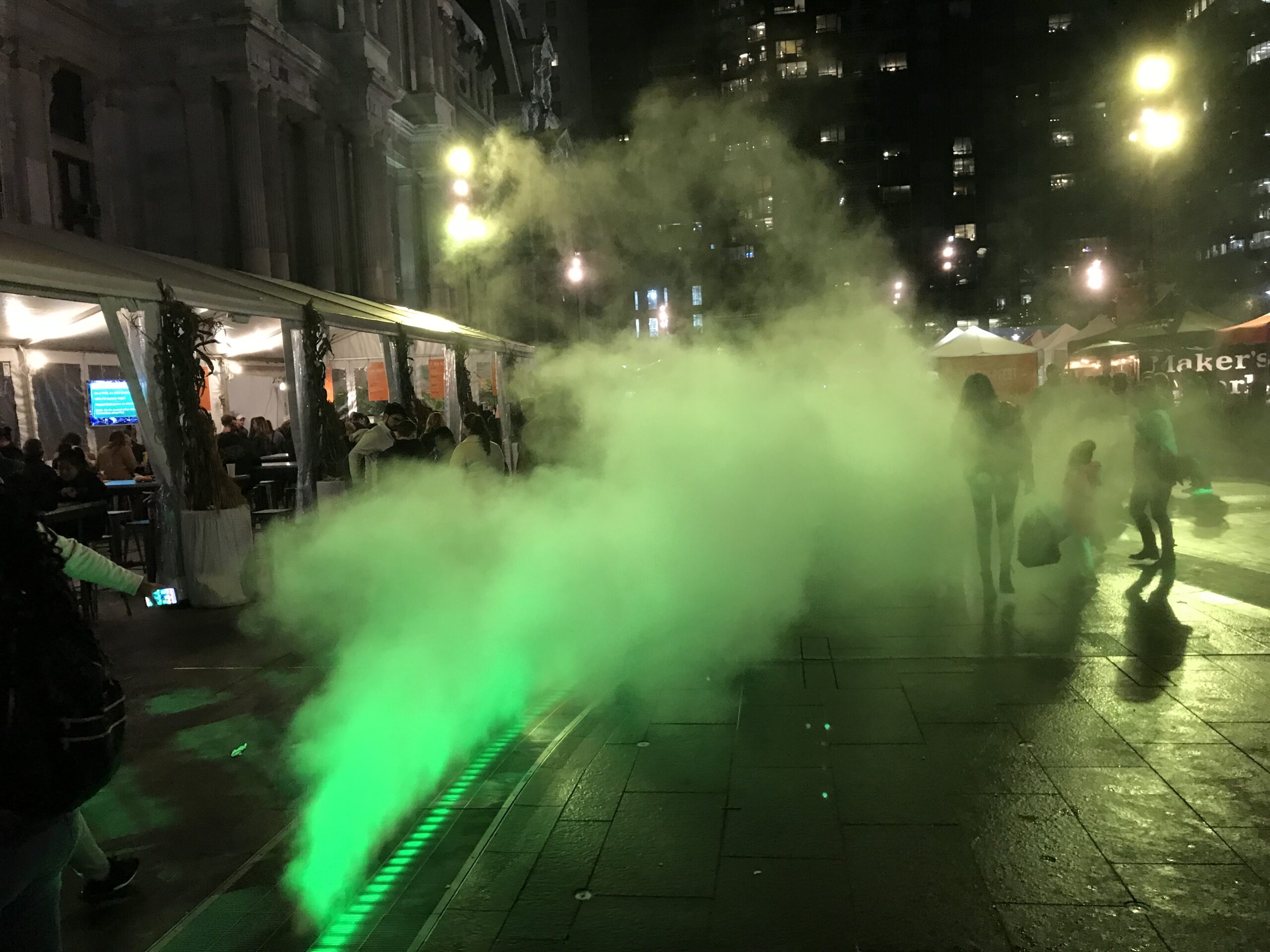
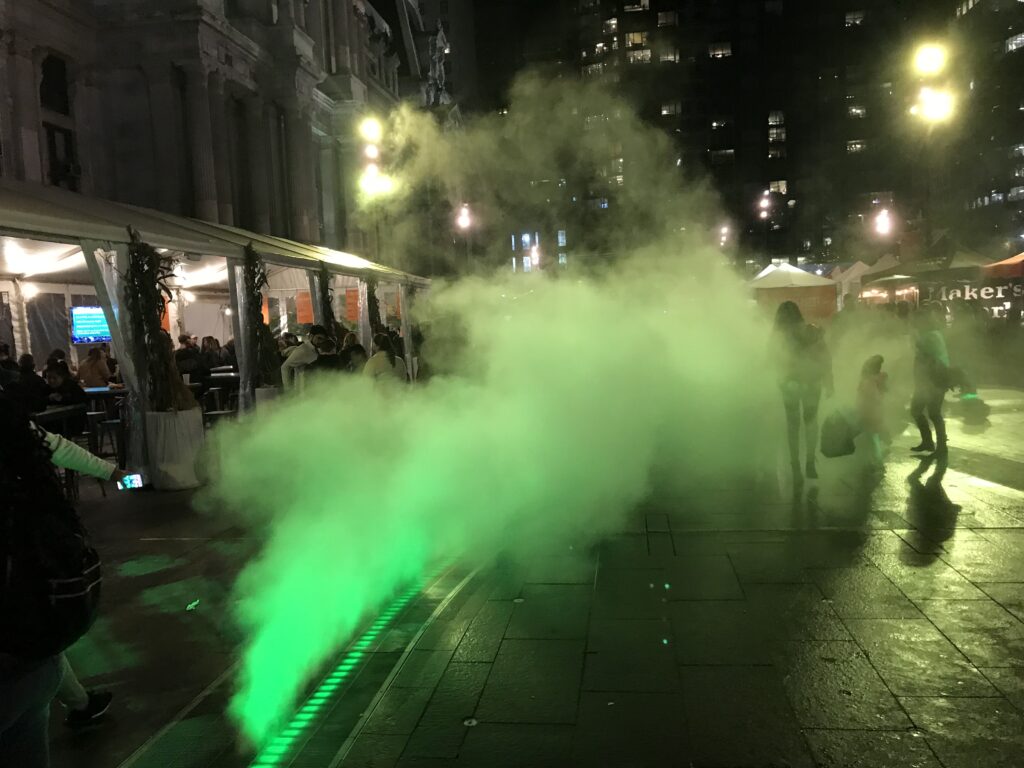
Award-winning Dilworth Park Plaza Project; Philadelphia, Pennsylvania – Photo Courtesy Koolfog, Inc.
The health of our planet and the landscapes we build upon its earth have long been subject to discussions regarding sustainability, conservation, and environmental impact. COVID-19 has rapidly accelerated how we view and interact with our environment and the pandemic has inspired reflection on how we can design public spaces with water and fog features that can benefit society in the future.
This pandemic has challenged our social behaviors as we have had to isolate and social distance. Finding open space, especially in urban settings, has become fundamental in providing a balance for nurturing both our physical and mental health. While outdoor exploration has been encouraged for exercise and fresh air, we cannot overlook the human need for connection with nature and its elements as an essential part of our psychological well-being.
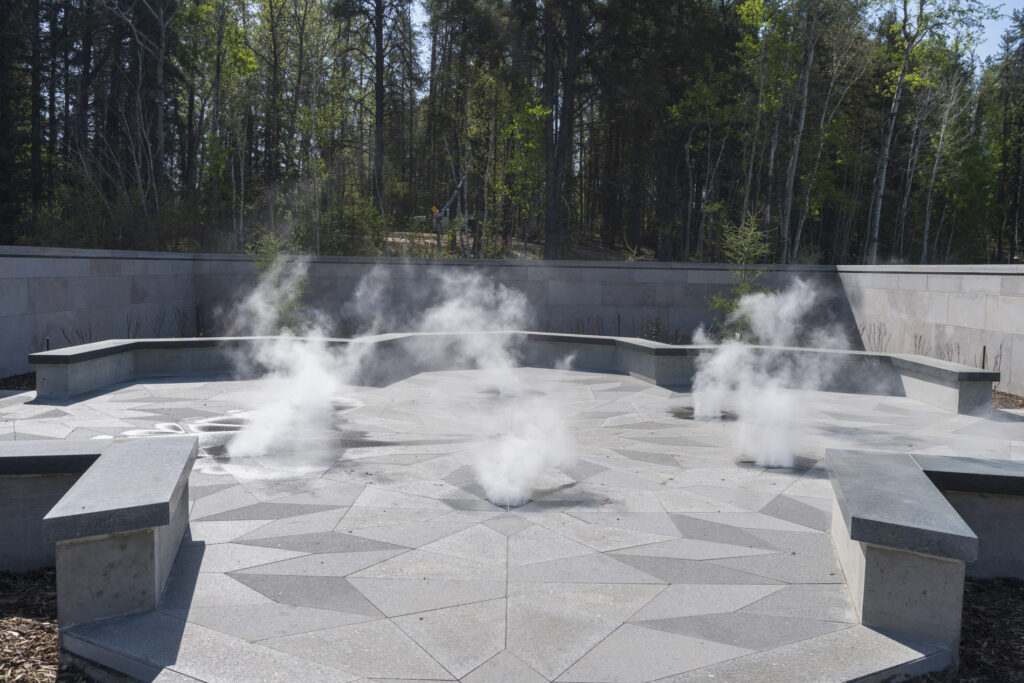
Jardin Aga Khan (Aga Kahn Garden); Alberta, Canada – Photo Courtesy Koolfog, Inc.
Post-Pandemic Landscape Architecture and Innovation
Famed Central Park landscape designer, Frederick Law Olmsted saw this same need following New York City’s cholera public health crisis. “He advocated for the healing powers of parks, which he believed could act like urban lungs as ‘outlets for foul air and inlets for pure air.’” The result, a virtual “green” island featuring large open spaces, trees, lush foliage, grassy knolls, ponds, walking paths, bridges, and water features placed in the middle of the city’s concrete landscape. Today, Central Park remains a haven for urban dwellers and is considered by many to be the heart of the city.
In a similar fashion, 2020 has turned our collective attention to how our infrastructure and outdoor environments can be designed to ensure public health goals, requiring a comprehensive approach that combines best design practices and principles with innovation and imagination.
Public health resiliency is a multi-faceted challenge impacting fundamental healthcare, environmental, economic, and management issues. According to Robert Mikula, OALA, CSLA, ASLA; Director of Creative Design & Landscape Architect, Crystal Fountains
“These things aren’t mutually exclusive. Public health resiliency requires our ability to look for ways to adapt to a “new normal” without compromising mental and physical well-being, sustainability, conservation and best practices. Moving forward, we must think of public water features in a different light. They can serve a practical purpose as well as entertain.”

Place Des Canotiers; Quebec City, Canada – Photography by Daoust Lestage
“Fountains are definitely good for the soul” – Robert Mikula
Historically, fountains and aqueducts were introduced to cities not directly located near a large body of water, later evolving into decorative features created to honor people, places, and events placed in gathering areas such as public squares and parks.
Studies show that the water element, in particular, is not only considered a “life-source” but significantly affects the psyche. The white noise generated from its movement is known to calm while water’s general characteristics are considered weightless. The spatial and visual effects of fogging systems not only enhance water features but offer cooling of surrounding spaces while drawing viewers into a connective experience. Mikula agrees, “ I think water in public spaces is important to societies collective psychology. Water is relative to time. It’s always moving yet mesmerizing at once. Water isn’t still so it allows us to focus on something, to contemplate, to enjoy its simplicity. I also think that water has a ‘playful’ factor. We, as fountain specialist designers are always looking for the minutia of the fountain, but if you watch how people interact with water there is such an appreciation of its sheer magic. Kids jumping up and down on a scrim feature or splashing in a fountain while adults close their eyes to breathe in the surrounding clean air or wave their hands in the air to capture a fog cloud…fountains are definitely good for the soul.
Advancing Water Feature Design With Purpose
Mikula has spent the better part of his career as a landscape architect designing and creating water parks, water features, and water attractions. As he puts it, “water is kinda sexy. People are very interested in incorporating water into their plans.” Yet, as we look to the future, Mikula has further outlined the importance of design for how water can be an element for promoting public health:
Utilize Water Elements to Repurpose Spaces
Water elements can be used in a decentralized manner to keep people apart. Rather than one central element, the water feature is designed to break up space into smaller spaces so that gatherings over 50 are discouraged at times. Perhaps this is only activated during periods of restriction. Computer programs can also create water grids with different configurations as well as control water flow to direct or control crowds to congregate safely.
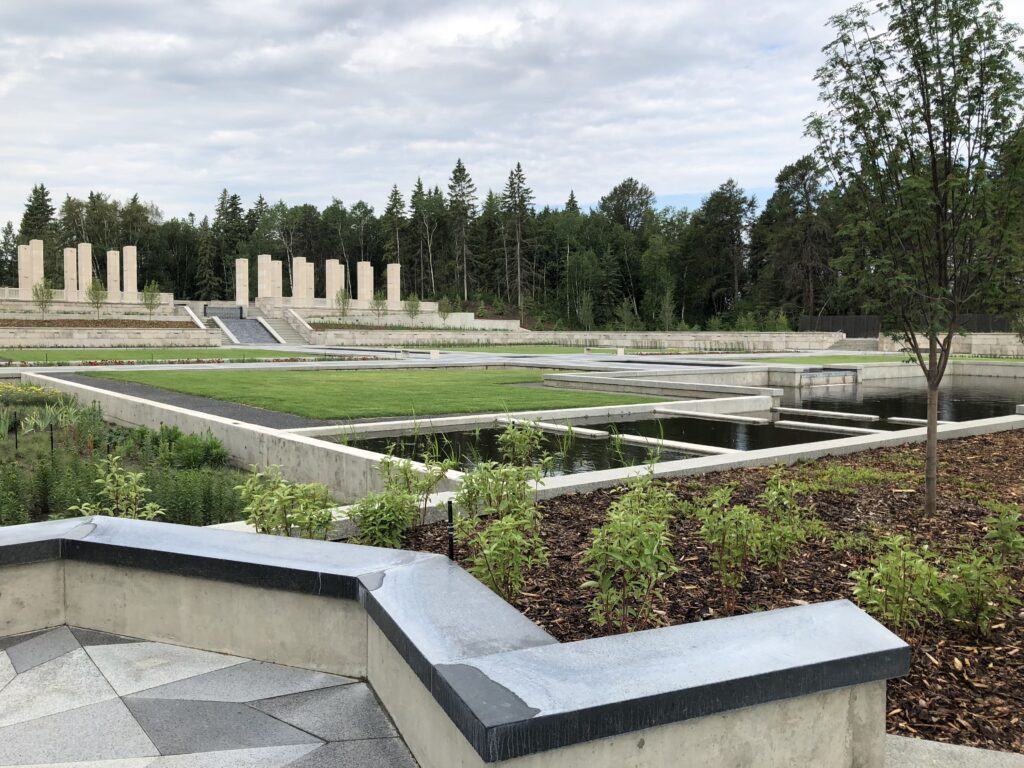
Jardin Aga Khan (Aga Kahn Garden); Alberta, Canada – Photo Courtesy Koolfog, Inc.
Promote Sustainable Practices
Conservation and environmental sustainability design practices may be essential. Water features can be dedicated resources for treating municipal water by capturing rainwater and when drained, in theory, is treated and goes back into the municipal system. This requires a closed-loop (water treatment) system, which literally, takes potable water from city supply and runs that directly through the fountain jets so that it drains off. It requires no chemical treatment system, no pumps, and saves on infrastructure costs.
Maintain Water Quality
Add Proximity Sensors, remote impact, control elements as well as promote less direct touch via automated, remote monitoring systems. In addition to ensuring public health, technology will provide for quick reactions to negative water events such as water contamination. To enhance sanitation requirements, properly designed and maintained closed-loop fountains could possibly serve as a disinfectant application. For example, the feature could incorporate an interactive deck style that when activated could sanitize the surrounding public space hard surface before operations begin each day. If there were a particular public health crisis event, a closed-loop system within such a water feature would have dedicated water treatment as well.
Limit Economic Impact
Implement Smart programs that can link any feature to a water and power metering system. This can help manage and control costs related to operations. Sensors and clocks to run at lower flow rates when visitors are less likely to be present should be considered.
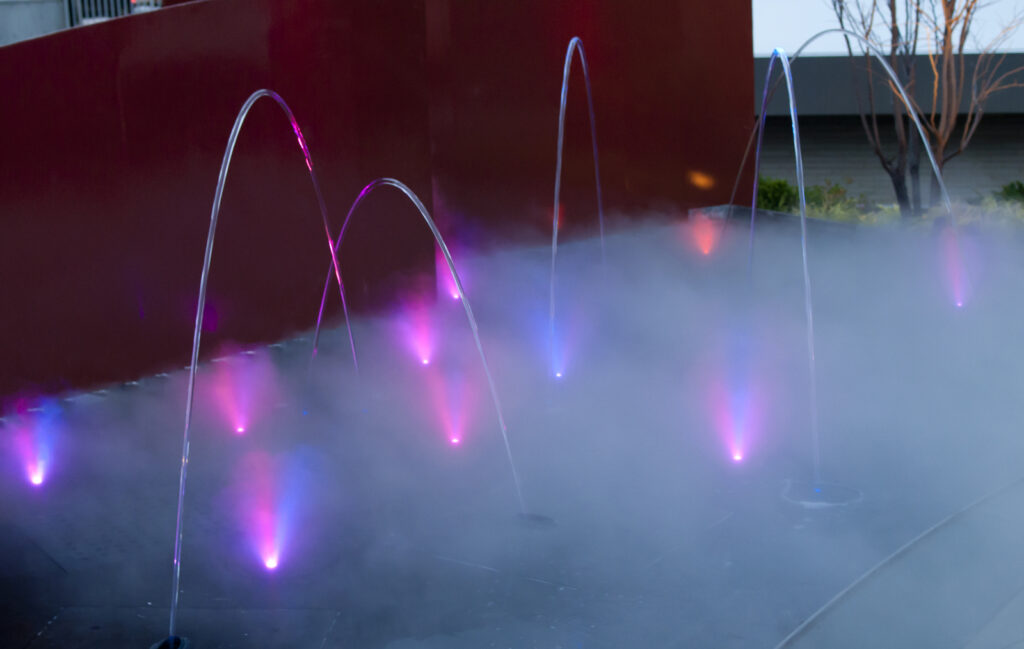
CMC Cleveland Medical Center; Cleveland, Ohio – Photography by Virginia Burt
Researching Alternatives for Cleansing the Environment
Incorporating fogging features into landscapes and water features can alter microclimates and have positive implications on cleansing surroundings. Proving out the idea that fog particles helps control airborne pathogens, similar to dust control, will be key factors in enhancing air quality. Crystal Fountains has worked with Koolfog, Inc., creator and manufacturer of high-pressure mist and fog systems, on several projects that incorporate fog as visual and spatial effect. However, there seems to be a consensus that the concept of “air-scrubbing” may have merit in developing future solutions to environmental public health.
Bryan Roe, President of Koolfog, Inc, explains, “Just like rain, which can attract tens to hundreds of tiny aerosol particles as it falls through the atmosphere, a fog feature can be as effective, possibly more effective in trapping airborne pathogens. Fog is already used in dust control applications to manage dust in working environments such as waste transfer facilities, construction sites and manufacturing facilities. It is therefore likely that the air scrubbing properties of fog in a public space can not only assist with direct contact transmission through pathogens contained in droplets but also indirect transmission through droplet nuclei that can be captured and brought to the ground.”
Koolfog produces millions of small 1-100 μm fog particles that agglomerate with airborne particles to form larger particles. Since larger particles fall out of the air significantly faster than smaller particles, this has direct implications to providing an “air scrubbing” purpose in outdoor spaces where airborne respiratory droplets are present. Much like rain droplets cleaning the atmosphere as demonstrated in a 2015 study by Massachusetts Institute of Technology, Department of Earth, Atmospheric, and Planetary Sciences (Ardon-Dryer, K., Huang, Y.-W., and Cziczo, D. J)5 the coagulation of water particles may be extrapolated to predict Koolfog’s potential for cleaning the air of airborne respiratory droplets.
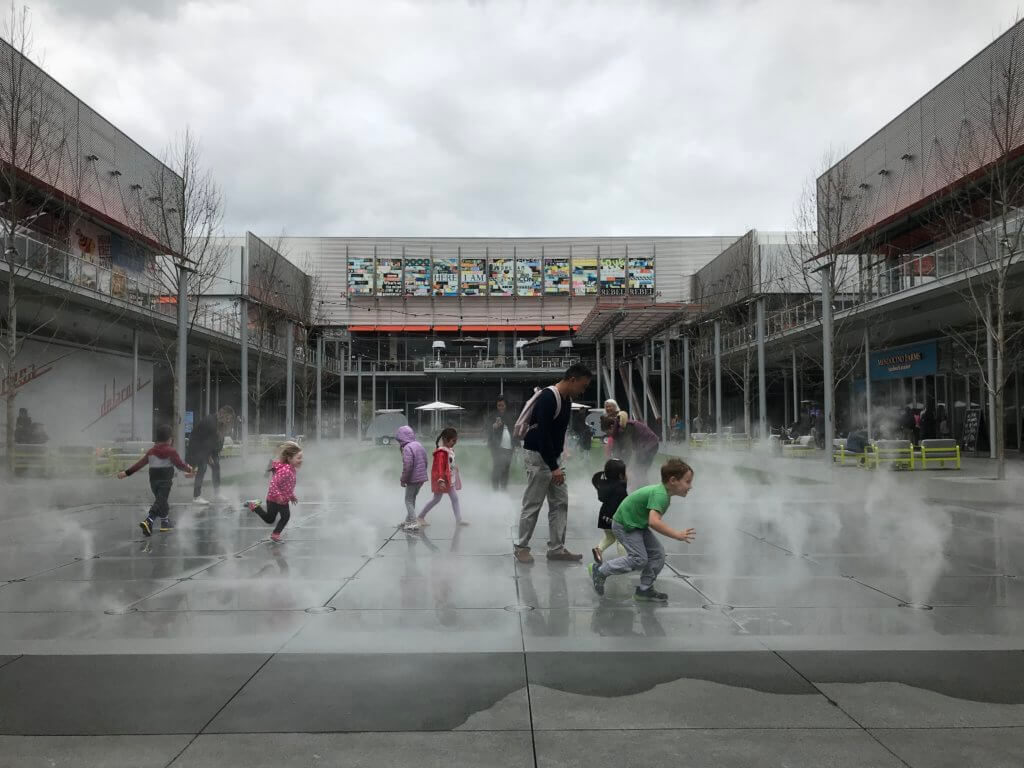
City Center Bishop Ranch; San Ramon, California – Photo Courtesy Koolfog, Inc.
“The shimmering liquid, layered in a structured pool of water, is present until it gently drains at the top of each hour. As the water recedes, fog appears for a programmed interactive sensory experience lasting approximately 10 minutes before the thin layer of water reappears. The scrim feature design has the potential to ‘scrub’ the surrounding environment.” – Bryan Roe
Mikula and his associates at Crystal Fountain have actively researched the value of water to a spatial microclimate with regards to air quality and their team will continue to consider solutions and conduct research to better understand the potential net positive impact to urban spaces. Mikula explains, “As water feature specialists, we want to take a leadership role in finding solutions to the many problems that COVID-19 has unearthed. Our team is collaborating with key industry partners to further identify appropriate disinfectants and sanitation solutions that are environmentally friendly but target pathogens such as SARS-CoV-2 (COVID-19).”
In reimagining a future beyond this pandemic, landscape design should seek to create a balance that nurtures both physical and mental health. In addition to providing an essential psychological connection to nature, water elements in public spaces have the potential to contribute to society’s overall healthcare by placing emphasis on water features as a public health benefit.
About Robert Mikula
As Director of Special Projects at Crystal, Mikula, a registered Landscape Architect, has focused on a wide array of high-profile international water feature commercial projects throughout the world. With over 20 years of experience in design and project management, he has extensive involvement with the water shaping process from conceptual development & testing to implementation & commissioning. As such, Mikkula has overseen the design of water effects, architectural water flows, water feature architecture, water illumination and specialist system designs. He is also a sought-after contributor to higher educational programs, magazine articles inclusion, and guest speaking engagements.







.jpg)